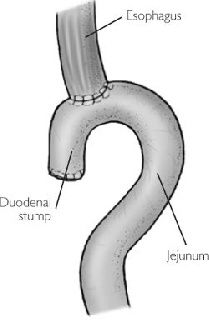Robotic gastrectomy is a modern surgical technique that involves using a robotic system to perform gastric surgery. The technique has gained popularity in recent years due to its several advantages over traditional laparoscopic gastrectomy. Laparoscopic gastrectomy is a minimally invasive surgical technique that involves making small incisions in the patient's body and inserting a camera and surgical instruments through the incisions. This essay will discuss the similarities and differences between robotic gastrectomy and laparoscopic gastrectomy and explore the advantages and disadvantages of both techniques.
Robotic Gastrectomy vs. Laparoscopic Gastrectomy:
Robotic gastrectomy and laparoscopic gastrectomy are both minimally invasive surgical techniques that are used to treat gastric cancer. Both techniques involve making small incisions in the patient's body and inserting a camera and surgical instruments through the incisions. However, there are several differences between the two techniques.
One of the primary differences between robotic gastrectomy and laparoscopic gastrectomy is the type of equipment used. Robotic gastrectomy uses a robotic system to perform the surgery, whereas laparoscopic gastrectomy uses conventional laparoscopic equipment. The robotic system used in robotic gastrectomy provides the surgeon with a high degree of precision and control, which is not possible with conventional laparoscopic equipment.
Another difference between the two techniques is the degree of freedom of movement. The robotic system used in robotic gastrectomy allows for a greater degree of freedom of movement than conventional laparoscopic equipment. This means that the surgeon can perform more complex surgical procedures with greater ease and precision.
Advantages of Robotic Gastrectomy:
Robotic gastrectomy has several advantages over laparoscopic gastrectomy. Firstly, it provides the surgeon with a high degree of precision and control. The robotic system used in robotic gastrectomy allows the surgeon to perform complex surgical procedures with greater ease and precision. This reduces the risk of complications during surgery and improves patient outcomes.
Secondly, robotic gastrectomy provides a greater degree of freedom of movement than laparoscopic gastrectomy. This means that the surgeon can perform more complex surgical procedures with greater ease and precision.
Thirdly, robotic gastrectomy reduces the risk of injury to surrounding tissue and organs. The robotic system used in robotic gastrectomy provides the surgeon with a high degree of precision, which means that the risk of injury to surrounding tissue and organs is reduced.
Finally, robotic gastrectomy reduces the length of hospital stay and the recovery time. The minimally invasive nature of robotic gastrectomy means that the patient experiences less pain and discomfort after surgery and can resume their normal activities sooner.
Advantages of Laparoscopic Gastrectomy:
Laparoscopic gastrectomy also has several advantages over robotic gastrectomy. Firstly, it is a more established surgical technique than robotic gastrectomy. Laparoscopic gastrectomy has been used for several years and has a proven track record of success.
Secondly, laparoscopic gastrectomy is more widely available than robotic gastrectomy. Laparoscopic equipment is more widely available than robotic equipment, which means that more hospitals are equipped to perform laparoscopic gastrectomy.
Thirdly, laparoscopic gastrectomy is less expensive than robotic gastrectomy. The cost of robotic equipment is higher than the cost of laparoscopic equipment, which means that robotic gastrectomy is more expensive than laparoscopic gastrectomy.
Finally, laparoscopic gastrectomy requires less training than robotic gastrectomy. Laparoscopic equipment is simpler to use than robotic equipment, which means that it requires less training for surgeons to use.
It is important to note that the use of robotic gastrectomy is still relatively new, and there is limited data on its long-term outcomes. More research is needed to determine the safety and effectiveness of robotic gastrectomy compared to laparoscopic gastrectomy. However, initial studies have shown that robotic gastrectomy is a safe and effective surgical technique that provides several advantages over laparoscopic gastrectomy.
Another challenge in the adoption of robotic gastrectomy is the training required for surgeons. Robotic systems are complex and require specialized training for surgeons to use them effectively. This can be a barrier to the widespread adoption of robotic gastrectomy, as not all surgeons may be willing or able to undergo the necessary training. Additionally, the availability of trained personnel may limit the accessibility of robotic gastrectomy to patients in certain regions.
Despite these challenges, the adoption of robotic gastrectomy is expected to increase in the coming years. As the technology improves and becomes more widely available, more surgeons may choose to adopt robotic gastrectomy. Additionally, patients may prefer robotic gastrectomy over laparoscopic gastrectomy due to its advantages, which may increase the demand for the procedure.
In conclusion, robotic gastrectomy is a modern surgical technique that provides several advantages over laparoscopic gastrectomy. It is a safe and effective technique that provides the surgeon with a high degree of precision and control, a greater degree of freedom of movement, reduces the risk of injury to surrounding tissue and organs, and reduces the length of hospital stay and recovery time. While there are challenges to the widespread adoption of robotic gastrectomy, the technology is expected to continue to evolve and improve, leading to better outcomes for patients with gastric cancer.
